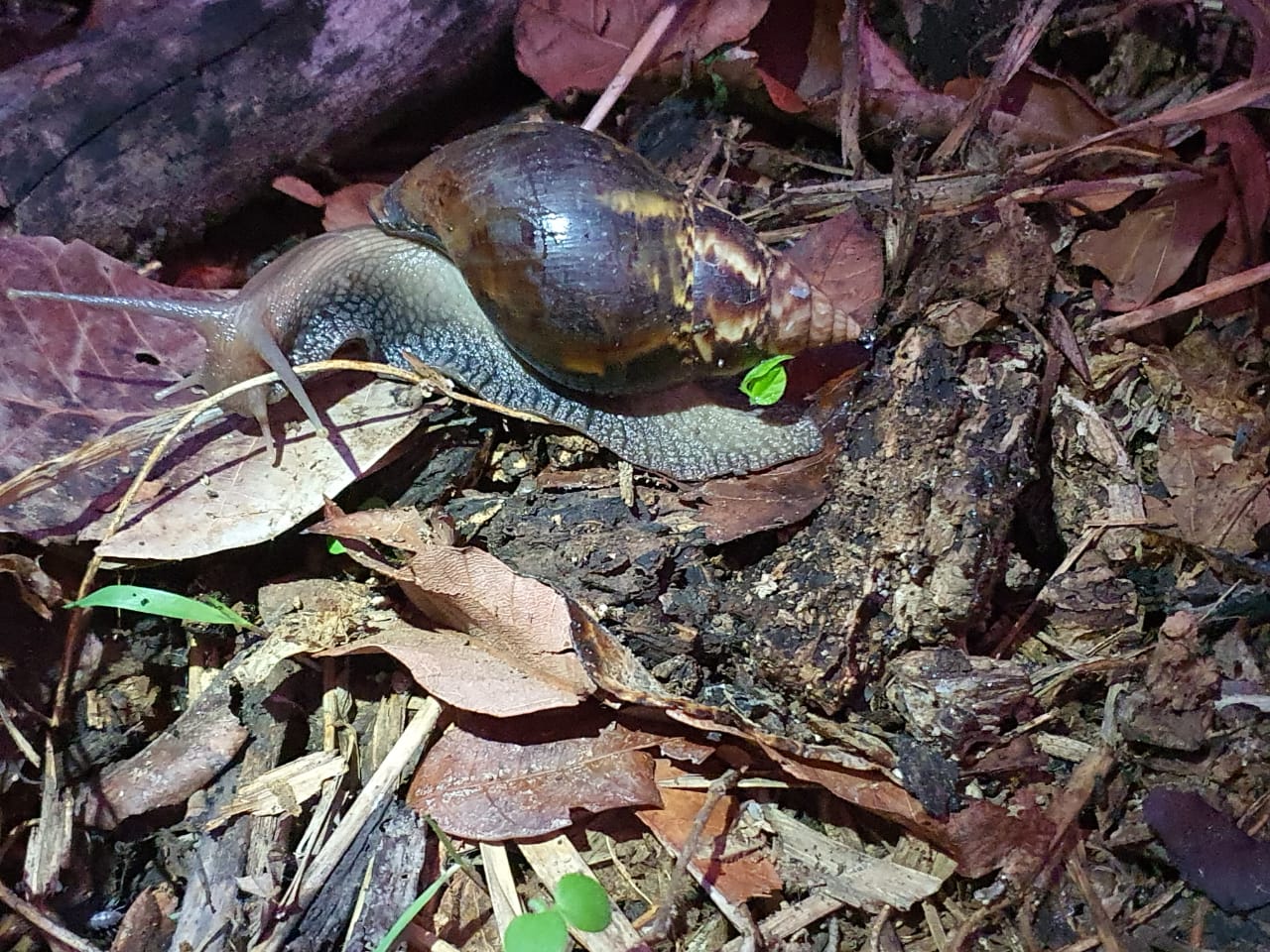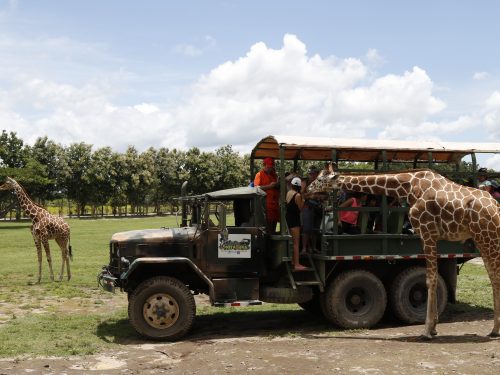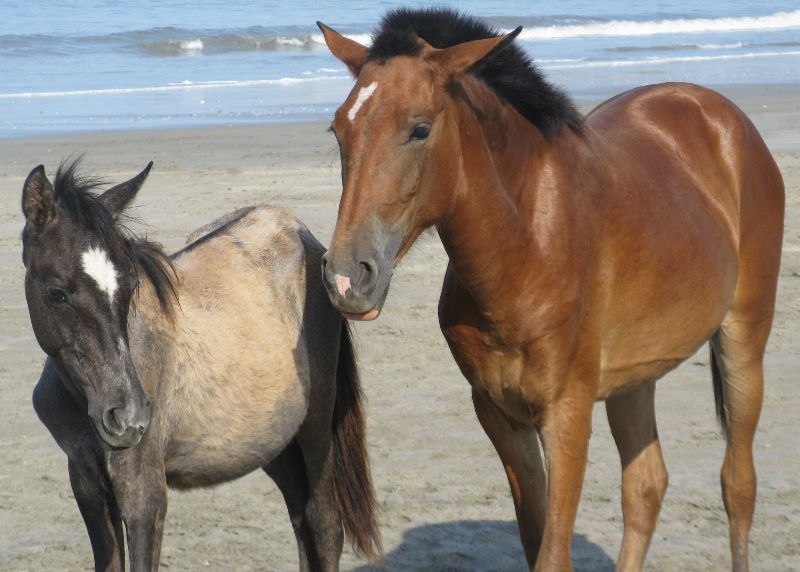
Almost every week, the State Phytosanitary Service (FSE- Servicio Fitosanitario del Estado) takes a freezer loaded with giant snails from Liberia to Peñas Blancas, where they are burned in an incinerator at the border branch office. They are collected by the institution’s staff or by area residents who locate them.
The giant African snail has inhabited the Curubandé district of Liberia since October of 2019. However, the SFE didn’t report its presence until April of this year.
With the announcement of its existence in the country, the government decreed a national emergency and requested that the International Regional Agricultural Health Organization (OIRSA-Organismo Internacional Regional de Sanidad Agropecuaria)— which includes countries from Mexico to Panama and the Dominican Republic— declare a regional alert.
A 2020 report from OIRSA stated that there were no reports of its existence in Costa Rica. According to Olger Borbon, an SFE official, the country didn’t communicate it to the organization until the end of that year.
With the emergency declaration, the institution hopes to get more resources to be able to eliminate it within a year, with actions such as acquiring products and hiring personnel. “It’s said to be eradicated when six months have passed without detecting it after doing all the work,” said Borbon.
This is one of the 100 most harmful invasive exotic species in the world, according to a list from the International Union for Conservation of Nature (IUCN). It has a strong reproductive capacity since it is hermaphroditic, and it adapts to the environment. In addition, it carries bacteria that is very harmful to crops and to animal, environmental and human health.
Through its slime, it can cause diseases to the nervous system, such as inflammation of the membrane that covers the brain (eosinophilic meningoencephalitis) or thrombosis in the blood vessels that supply the intestines and other digestive organs (eosinophilic colitis), which can lead to appendicitis and inflammation.
The snail’s presence has been reported on the continent, in the Dominican Republic and in South American countries such as Colombia, Argentina and Brazil.
How did it get into the country and why didn’t they communicate its presence until now? Is the invasion under control? We spoke with Dr. Olger Borbon, national coordinator for the snail infestation and an SFE Regional Operations Program official, to answer these and other questions. The interview is lightly edited for length and precision.
When and how did it arrive in the country?
We suspect that someone who lives in Curubande brought it hidden in suitcases. That is how these types of [invasive species] commonly arrive in countries. The person had the giant snails in the house and they escaped, unfortunately.
And is this person being held responsible for bringing it in?
Well, the person is dead now. And yes, of course, there are always responsibilities, but, well, we detected it in October of 2019 and from then on, the full quarantine infestation containment plan is developed with the main objective of trying to eradicate it; that is to say, eliminate it.
If the snail was identified back in 2019, why wasn’t its presence communicated until now?
It’s due to reasons of compliance with internal processes. At that time, we activated all the processes as SFE, in charge of crop pests. Why are we reporting it and declaring it a national emergency? We’re declaring the emergency to alert citizens of the risk that there may be: economic damage to crops, the problem that it can cause to the environment, to human beings and animals due to transmitting diseases.
But then in April, when it was communicated, did something different happen that made you guys announce it or why specifically at that time?
There’s always a process. First, there’s a stage in which we act and, even at the same time as we are acting and have efficient control over the infestation, we notify the producers in the area. Why didn’t we report it before? So curious people wouldn’t come to look for the snail and, unfortunately, it could have escaped to other regions.
How many have you identified since 2019? Has the number of snails detected changed periodically?
Roughly, I can tell you that since 2019, we’ve collected about 500 individual specimens. The last collection we did, from May 24 to 28, we found 14 individual adults and 24 shells. When we talk about shells, the mollusk is already dead [due to the application of the pesticide metaldehyde].
And yes, it has been declining. Populations at this time are very low, 0.01 snail per hectare (about 2.5 acres), due to all the work being done by the Chorotega region staff. We have a regional [office] that is made up of six members and those people take turns every day to carry out a manual control, which is the most effective.
How do we know that it’s contained in Curubandé and that it hasn’t gotten out?
We made two contingency rings in the Curubandé area. The first is a contingency ring with a one kilometer diameter, covering about 78 hectares (about 192 acres). And the second is double that, which is to say, it’s two kilometers in diameter.
In the first ring, the 78-hectare one, we have only found it in an area of 21 to 30 hectares. In other words, after the year 2019, it’s still in the same ring. It hasn’t gotten out to the second containment ring.
And what actions are developed to control the infestation?
When we were certain that the snail was there, we met with the community and gave them training. We even trained Hacienda Guachipelín, which isn’t very far away, because since people come from other places, [it’s important that they have information because the snail can even stick to car tires]. We’ve given information to people in the community and we’ve taught them to identify it. It’s been a very friendly relationship and people have been willing to collaborate.
How do they work in the area where they have appeared?
There are ten farms, generally pastures, that are in the area where it appeared. There may be about 60 people living in the place.
We continuously sample the farms where the snail appeared. Within these samplings, we apply various techniques: manual collection of snails, [which are incinerated afterward], applying products to control the snail, which have been very efficient, application of herbicides to eliminate hosts [such as plantains and bananas], because there are farms that are semi-abandoned. We also collect debris [because it can also house them].
Have you detected any damage to crops?
No. Curubandé is mainly a cattle-producing area. The producers have had to sacrifice certain lands because we’ve burned them with herbicides. Then we’ve given them food, nutrients, salts and bales in exchange. We did that at the end of 2020.
The Snail in Brief:
How do I identify it?
The giant African snail can be up to 25 centimeters long, but it’s unlikely that you’ll see one of that size in the area. They are generally 5 centimeters long (the size of a battery or a flash drive).
The body is dark brown and sticky. It has a cone-shaped shell with brown, beige and yellow stripes. It has four little “antennas” on its head.
What do I do if I see one?
- Don’t touch it with your bare hand. Wear gloves or use a bag.
- Look around to see if there are others nearby.
- Wear gloves or use a bag and try to catch it/them in a closed container or a sealed bag.
- If you kill it/them for any reason, still capture it/them using protective equipment and keep it/them.
- Call SFE officials immediately to have it/them picked up and destroyed. Phone numbers: 2549-3635, 2549-3636, 2549-3400
- In addition, inspect your vehicle when leaving Curubandé. Make sure there aren’t any snails attached so you don’t take the invasive species to other areas of the country.







Comments